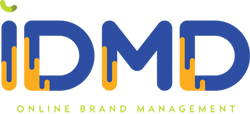Introduction: Inbound vs. Outbound Marketing
Inbound and outbound marketing are two distinct marketing strategies. Inbound marketing focuses on creating valuable content that aligns with customers’ interests and needs, using tactics like SEO optimization and social media engagement. Outbound marketing, on the other hand, aims to reach a broader audience through traditional channels like advertisements, cold calls, direct mail, and email blasts. Both play crucial roles in a comprehensive marketing strategy, with inbound focusing on building relationships through valuable content and outbound aiming to reach a larger audience through direct outreach and advertising efforts.
A Brief History of Advertising
Traditional advertising agencies such as Ogilvy & Mather, McCann Erickson and Young & Rubicam were big players in the 60’s and 70s, also known as the golden age of television, dominating the advertising world in the Mad Man-esque era, which lasted into the 1990s. These advertising agencies were well-known for their “Madison Avenue” flair and produced memorable campaigns. includes timeless slogans, memorable jingles, and eye-catching ads. Their impact on consumer culture and their ability to present polished, convincing messages to large audiences, however in the absence of analytical data, the eye was on the idea, and less so on the bottom line.
Adapting to Technological Advancements
The COVID-19 pandemic has accelerated the need for businesses to adapt to technological changes, leading to a surge in e-commerce adoption. This shift, equivalent to a decade of eCommerce growth in a few months, compelled businesses to embrace digital solutions, such as robust online storefronts, contactless payment systems, and enhanced digital marketing strategies. The crisis underscored the importance of agility and innovation, indicating that businesses willing to adapt and harness technology are better positioned to navigate challenges and seize opportunities in this rapidly evolving landscape. (Coronavirus pandemic sparks 10 years of eCommerce growth – Yahoo Finance)
Structure you Google Analytics Account
Google Analytics is a crucial digital tool that provides valuable insights into website performance, user behavior, and audience engagement. It helps businesses understand user interactions, traffic sources, demographics, and conversions. With Google Analytics 4, the latest version offers enhanced capabilities like machine learning, cross-device tracking, and user-centric data. This makes it an essential asset for businesses adapting to the digital landscape.
Demo Account in Google Analtyics
The Google Analytics Help Center offers resources for beginners, including migration from UA to GA4, managing accounts, properties, and users, understanding reports, Google Ads and attribution, audiences and remarketing, and integrations. A demo account is available for users to experiment with data from the Google Merchandise Store and Flood-It, providing a fully functional experience for real business data analysis.
Introduction to Metricool
Metricool is an all-in-one platform for data-driven insights and seamless social media management. It empowers businesses, marketers, and influencers with actionable insights to optimize their online presence, engage audiences, and drive meaningful results. Metricool simplifies online marketing by tracking performance metrics across multiple platforms and scheduling and analyzing content. It allows users to focus on building their brand and connecting with their audience, ensuring data-driven decisions and intuitive social media management.
HubSpot Email Marketing
The email template allows users to create visually appealing emails without the need for designers or IT experts. It features a drag-and-drop editor for easy customization of layout, calls-to-action, images, and content. The template is designed to meet specific team needs and is powered by HubSpot’s free CRM tool. Tailoring emails to each subscriber’s lifecycle stage, list membership, or contact records can increase email engagement and clicks. This feature ensures the most relevant subject lines, content, links, attachments, and calls to action. HubSpot’s video provides an overview and tutorial on the FREE tools available through the platform.
Omnisend Email & SMS Marketing
Omnisend is an all-in-one ecommerce marketing platform designed for nimble businesses. It offers powerful email and SMS marketing, automations, and multiple channels to drive sales impact. Omnisend’s library of templates allows users to create professional, shoppable emails without coding, customize them to fit their brand, add products, and save them as presets for future campaigns. The platform also features a drag-and-drop email builder and dynamic discount codes.
Sender Email Marketing
Sender is a tool that allows businesses to connect with customers and grow their revenue quickly and easily. It allows users to create beautiful, branded emails using a library of professionally designed templates or create their own unique designs in minutes. The tool also features a drag-and-drop builder, allowing users to create newsletters like a pro. It also offers a free templates gallery and a customizable HTML editor for creating custom templates. Responsive emails ensure that emails are readable across different devices, browsers, and email clients.
SEMRush SEO Tools
Semrush is a SaaS platform for online visibility management and content marketing, allowing marketers to build, manage, and measure campaigns across all channels to improve their online visibility. It provides 55+ tools and reports to help solve marketing challenges and ensure creativity and experimentation. Semrush is a digital team member, analytics buddy, mentor, safety net, and compass to new markets, making it an essential tool for marketers.
